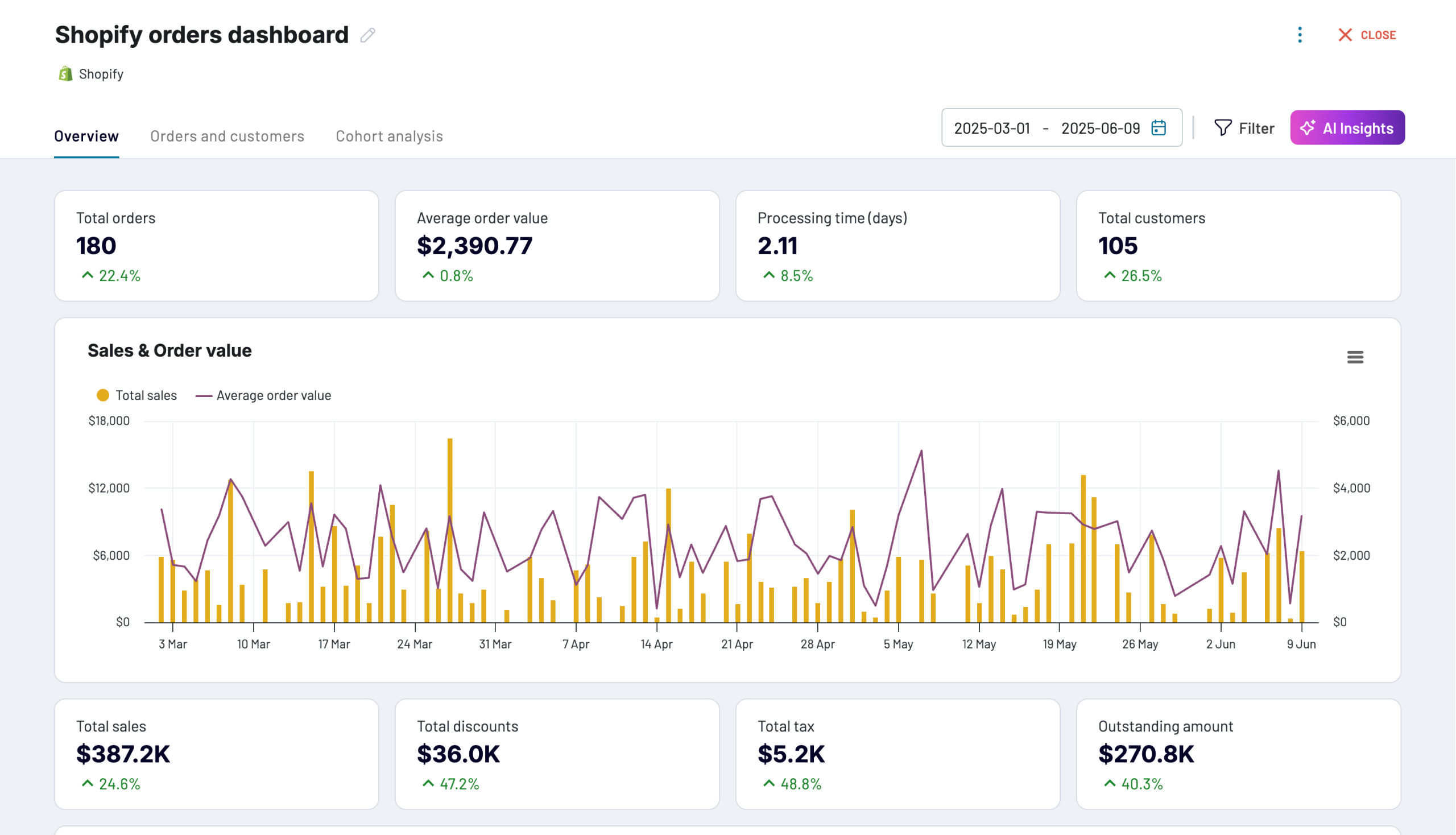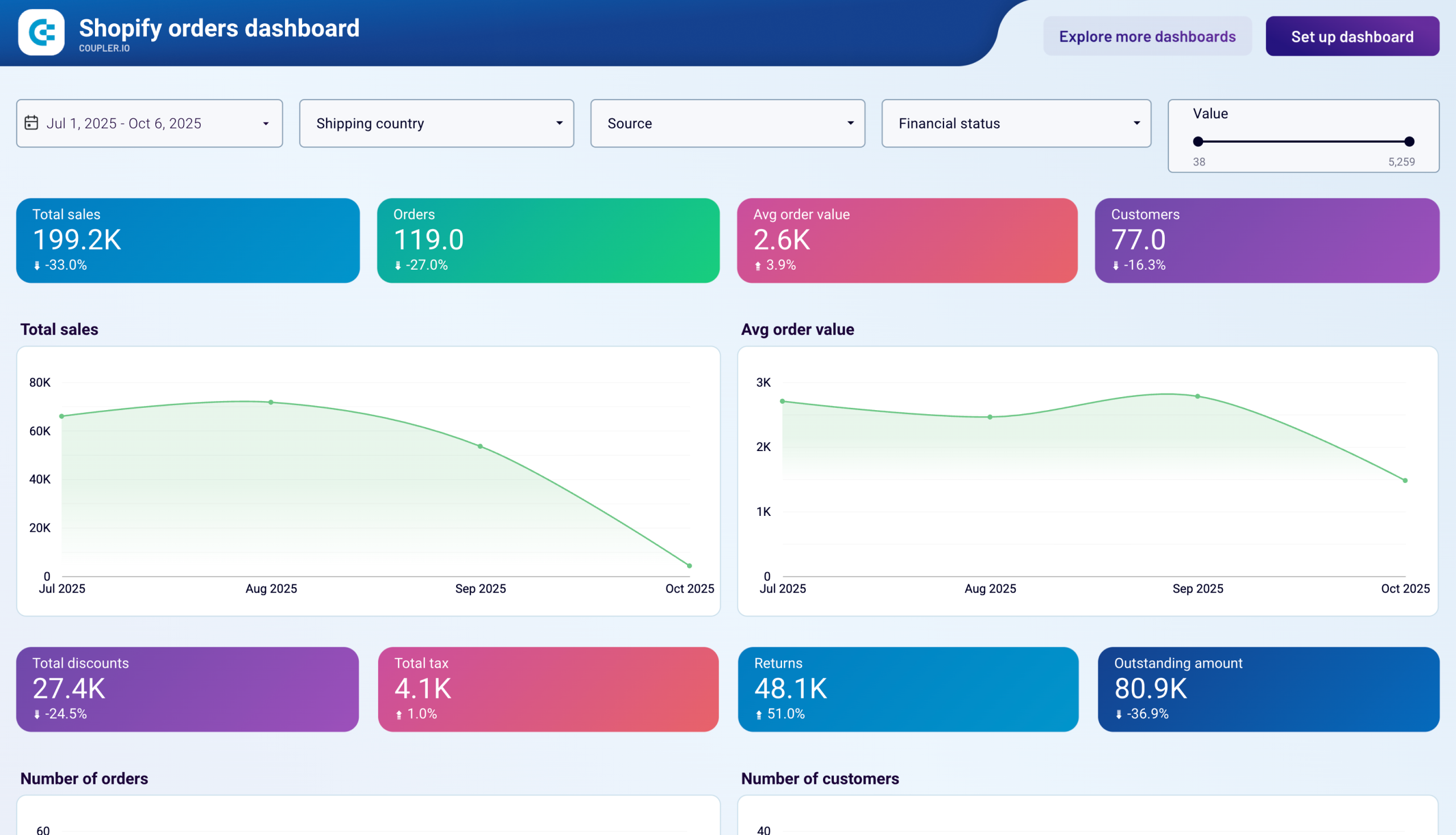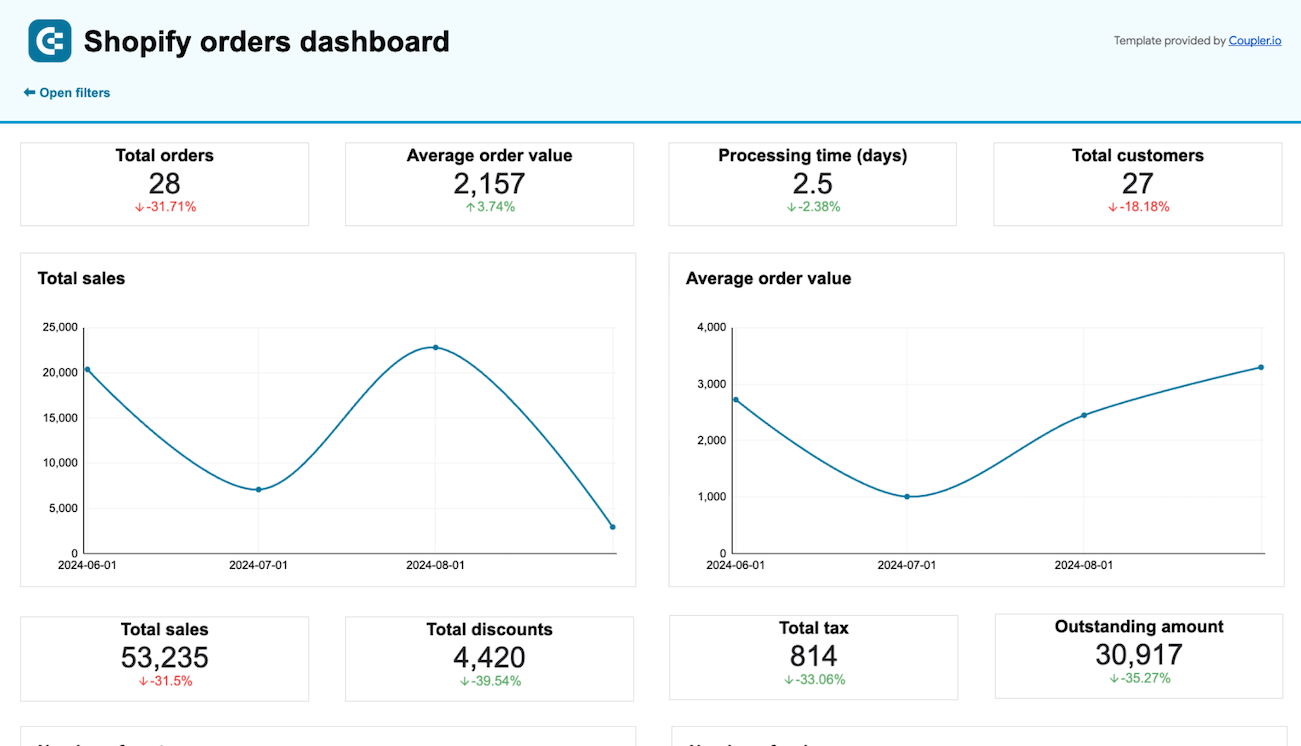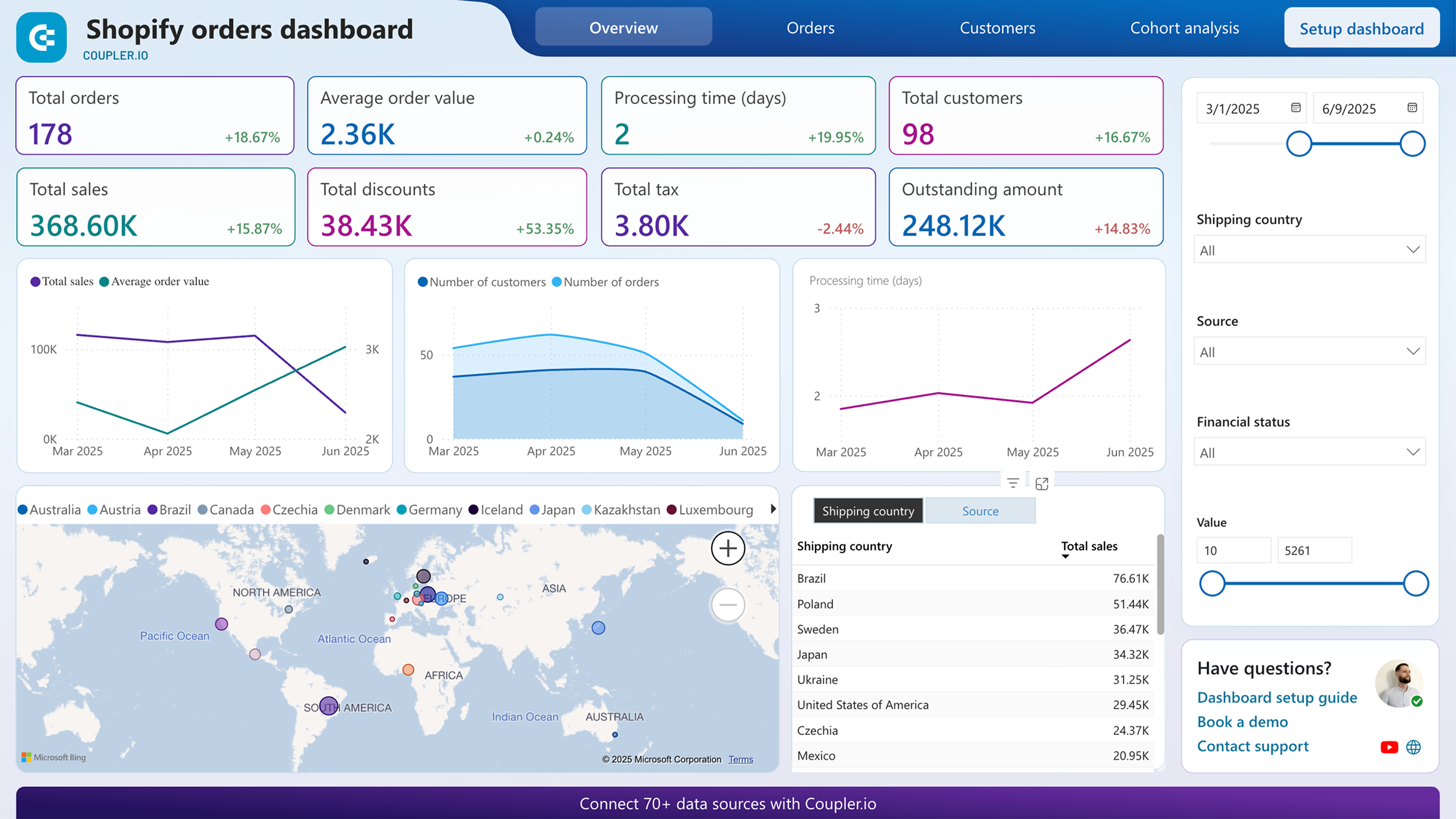Specifically visualized for

Coupler.io Dashboard

Looker Studio

Google Sheets

Power BI
Sources used
-
Shopify
Key metrics:
- Total orders and order volume
- Order value and average order amount
- Order status (pending, fulfilled, refunded)
- Revenue by geography and customer segments
- Top-selling products by order frequency
- Customer acquisition (new vs returning customers)
- Order fulfillment rates and processing times
Three challenges this orders dashboard template helps resolve
- Order fulfillment bottlenecks: Identify pending orders, payment issues, and geographic shipping problems that prevent successful order completion and revenue loss.
- Inventory planning inefficiencies: Track product performance and seasonal order patterns to optimize stock levels and prevent both overstocking and stockouts.
- Marketing spend optimization: Understand which channels and campaigns drive the highest-value orders to allocate advertising budgets more effectively across platforms.
What you will learn from the orders dashboard
This order management dashboard template helps you monitor your Shopify store's order performance and customer purchasing patterns. By connecting your Shopify account, you'll discover actionable insights that drive business growth:
- Which geographic markets generate the highest order values? Use the order analysis dashboard to identify countries contributing most to your revenue. This insight helps you optimize shipping strategies and focus marketing efforts on profitable regions while potentially limiting availability to low-performing areas with high shipping costs.
- How do different marketing channels influence order patterns? Track which traffic sources drive the most valuable orders through your order tracking dashboard. Understanding whether organic search, paid ads, or social media generates higher-value purchases allows you to allocate marketing budgets more effectively.
- What order statuses require immediate attention? Monitor pending and refunded orders through your open orders dashboard to identify bottlenecks in fulfillment or quality issues. Quick identification of blocked purchases helps you resolve payment problems and maintain customer satisfaction.
- Which products drive repeat purchases? Analyze top-selling items and customer cohorts to understand buying behavior patterns. This order management dashboard reveals whether customers are making one-time purchases or returning for additional orders, informing your retention and inventory strategies.
What reports you get with our orders dashboards
A detailed order tracking dashboard should provide multiple perspectives on your e-commerce performance to support strategic decision-making across operations, marketing, and customer service functions.
Geographic order performance analysis
The Shopify orders dashboard includes detailed geographic breakdowns showing order distribution by countries and regions. This report helps identify shipping optimization opportunities - for example, if you've only had one delivery to a country with high shipping costs, you can make informed decisions about limiting availability to that region. The geographic filter also reveals which markets generate the most revenue, enabling targeted marketing investments and localized customer acquisition strategies.
Order status and financial tracking
Your order management dashboard template should include comprehensive order status monitoring with financial status filters to track pending and refunded orders. This report allows you to quickly identify blocked purchases and correlate them with specific geographic regions or products. The financial status insights help unblock stalled transactions and maintain healthy cash flow by highlighting orders requiring immediate attention or customer service intervention.
Customer cohort and product performance analysis
The order analysis dashboard provides detailed views of customer behavior through cohort analysis, showing the distribution of sales between new and returning customers. Combined with top-selling product reports, this insight reveals purchasing patterns and helps optimize inventory management. You can identify which products drive repeat business and adjust pricing, promotion, and stocking strategies based on actual order data rather than assumptions.
How to create an orders dashboard?
Step 1
1
Go to the Readme tab where you can see instructions on how to set up the orders dashboard template.
Step 2
2
Click the button to set up the Coupler.io connector for your Shopify store account.
Step 3
3
Follow the instructions to prepare and load data to the dashboard.
Step 4
4
Go back to Coupler.io to configure the schedule for the data refresh of your orders reporting dashboard.




